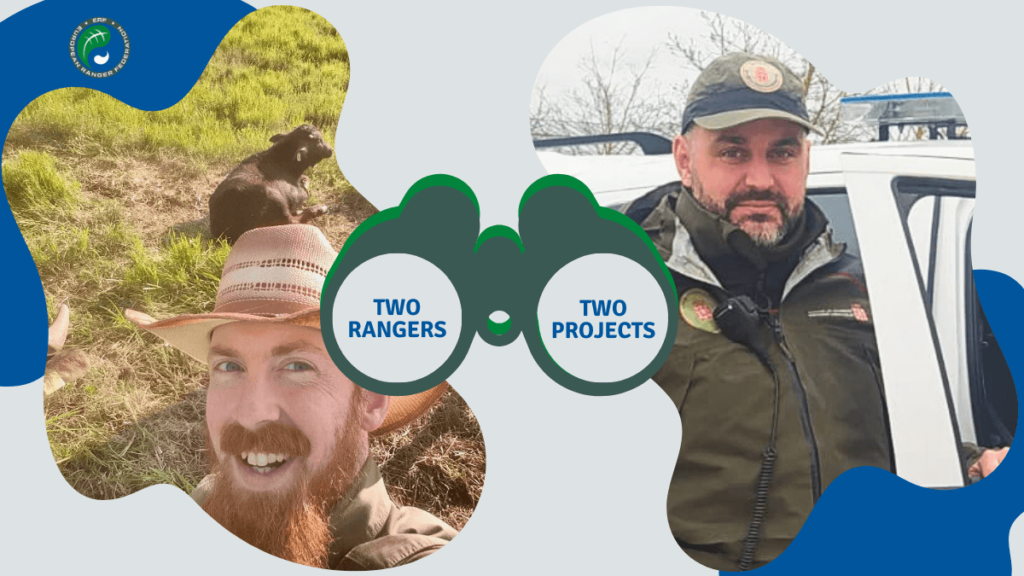Our new “Two Rangers, Two Projects” is about the work of rangers against environmental crime through research and in favour of natural habitat conservation by water buffalo. While Fermin is writing a master’s thesis on green criminology in addition to fighting environmental crime, Kris is working on the water buffalo project to ensure that wetland keeps its valuable ecological functions.
Read here, how Fermín Iñarrea, ranger with the Environment Department of the Government of Navarre, Spain, aims at better prevention of environmental crime with his master thesis on methods of opportunity theory and green criminology. At the same time, the work of Kris Luckin, ranger for the Swedish Värmdö municipality, is helping to increase biodiversity in restored wetland and, in parallel, environmental education about the importance of these habitats.
Two further facets of how ranger work helps to protect life and diversity on this planet for the benefit of all!
How I became a ranger and got involved in the project
Fermín
The interest in this job comes from my family; they worked in agriculture and forestry, so I saw it from a young age. Later, during my studies, I became interested in this field, and as an adult, I pursued the job opportunity. The motivation for the Theory of Opportunity project stems from the need to advance research on environmental crimes and the necessity for legal system change. Simply imposing sanctions doesn’t solve all problems; we must move beyond the reactive role of sanctions and understand the development of each crime.
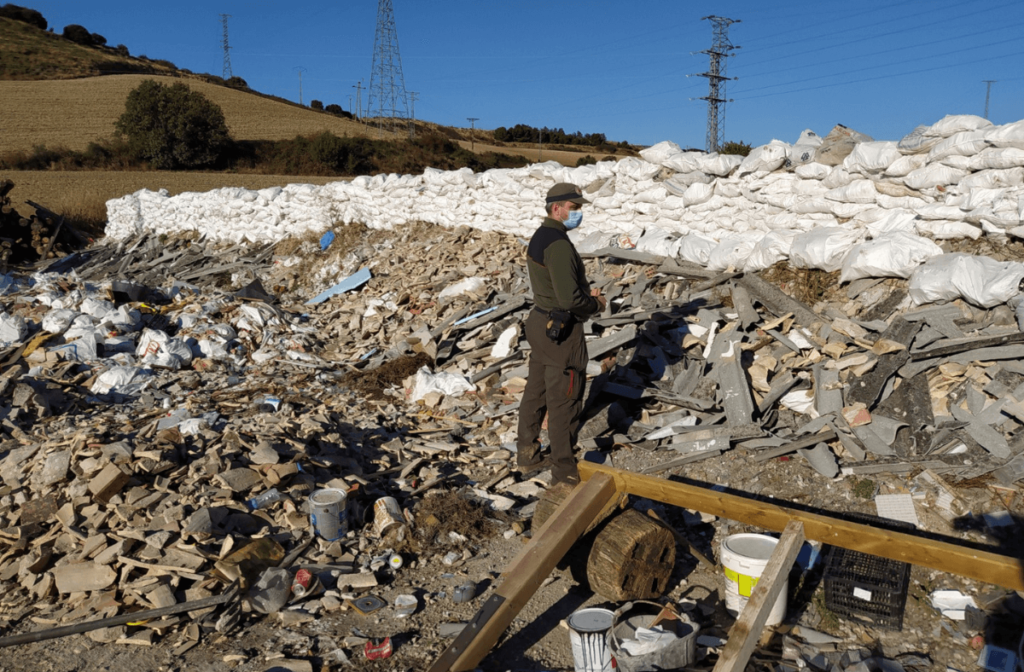
Kris
I’ve pursued a career as a Ranger to help protect and steward the natural areas we have left and to slow and reverse some of the biodiversity loss that human development has caused. The journey began with a job as the Ranger for Chiswick House and Gardens in west London and I’ve continued to learn and develop in the role since moving to Sweden.
I became a ranger to slow down and partially reverse the loss of biodiversity caused by human development
I am currently the Head Ranger and ordained Conservation Guard for Värmdö municipality. The water buffalo project was initiated by my colleague and former manager in the Parks group, and at the time I was the lone Ranger in the department. Now there is me and three other rangers working in my team.
This is what the Ranger project is about
Fermín
The main responsibilities of our ranger team include managing and policing Navarra’s natural resources, complemented by environmental education and collaboration in Civil Protection plans for various emergencies. My studies help me a lot in my day-to-day work. It enables me to look at situations from different angles, which would otherwise not be possible. This knowledge can be applied to crime as well as to work organisation or conflict resolution.
Knowing about the origin or
motivation of environmental crimes allows us to prevent them
With regard to environmental crimes, knowing their origin or motivation allows us to prevent them, of course, without losing sight of police work. This theoretical model I’ve studied also proposes changes in policing models, advocating for a proactive role and introducing interesting techniques for addressing environmental crimes. From this perspective, the Ranger fits as a key piece in the system, serving as a resource manager, law enforcer and liaison between population and administration. No other public servant performs such a specialised task.
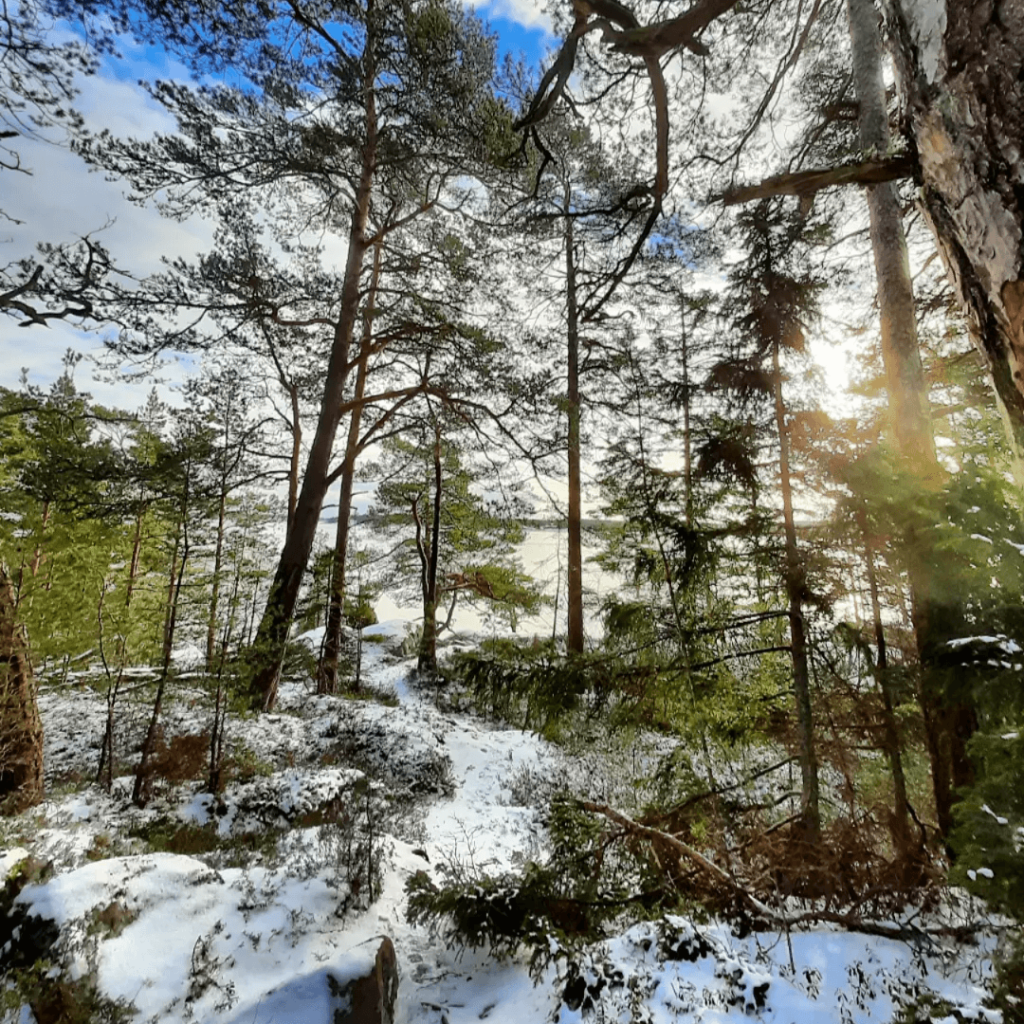
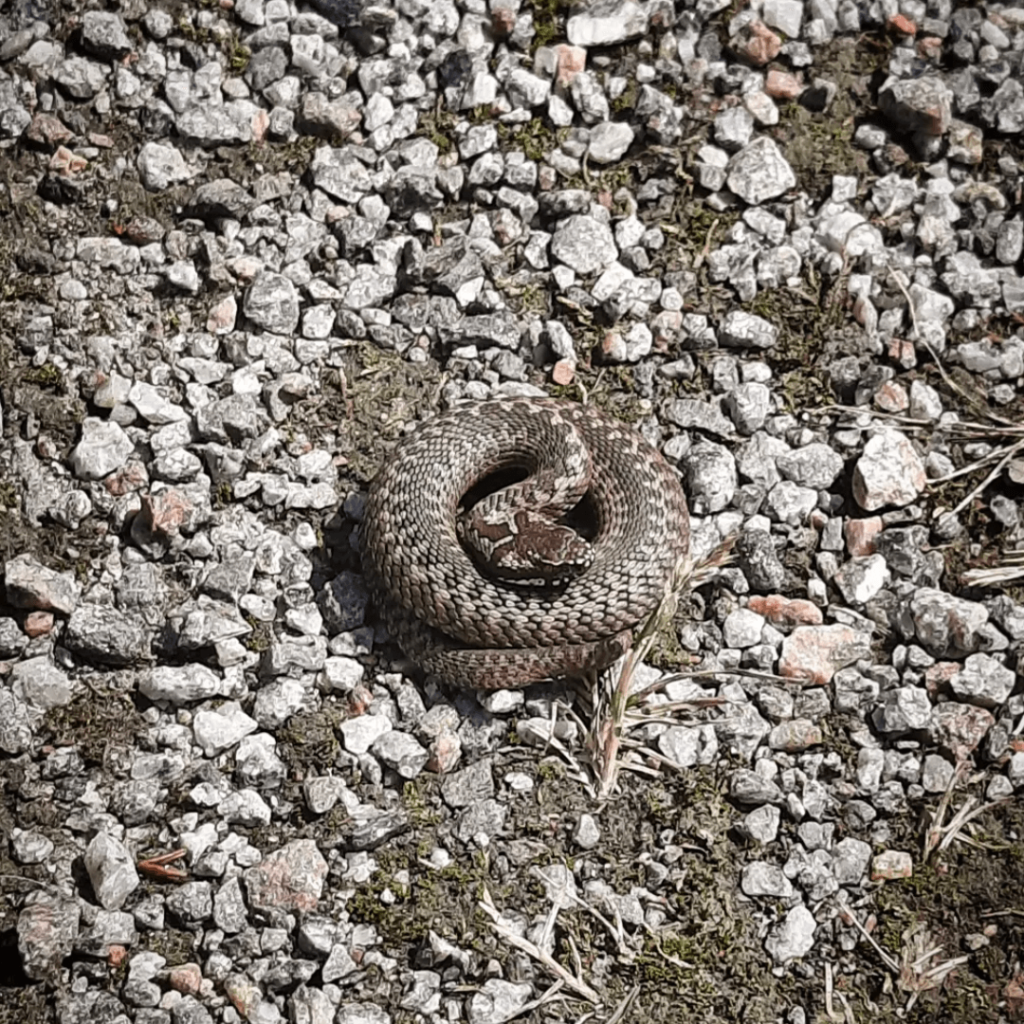
Kris
We have a restored wetland, Hemmesta Sjöäng, that requires regular maintenance to prevent overgrowth of reeds and maintain it’s ecological function. Looking for a more sustainable alternative to annual mechanized cutting, clearing and transport of the cut vegetation, we did a pilot test in 2023 employing three asian water buffalo to graze approximately two hectares of the area. I was involved in the planning, logistics and day-to-day supervision of the buffalo. We still regularly check on site whether they are doing well, have enough to eat, water and minerals and whether the electric fences we have erected to keep the buffalo in the area where they are supposed to graze are working.
Challenges, first outcomes and goals
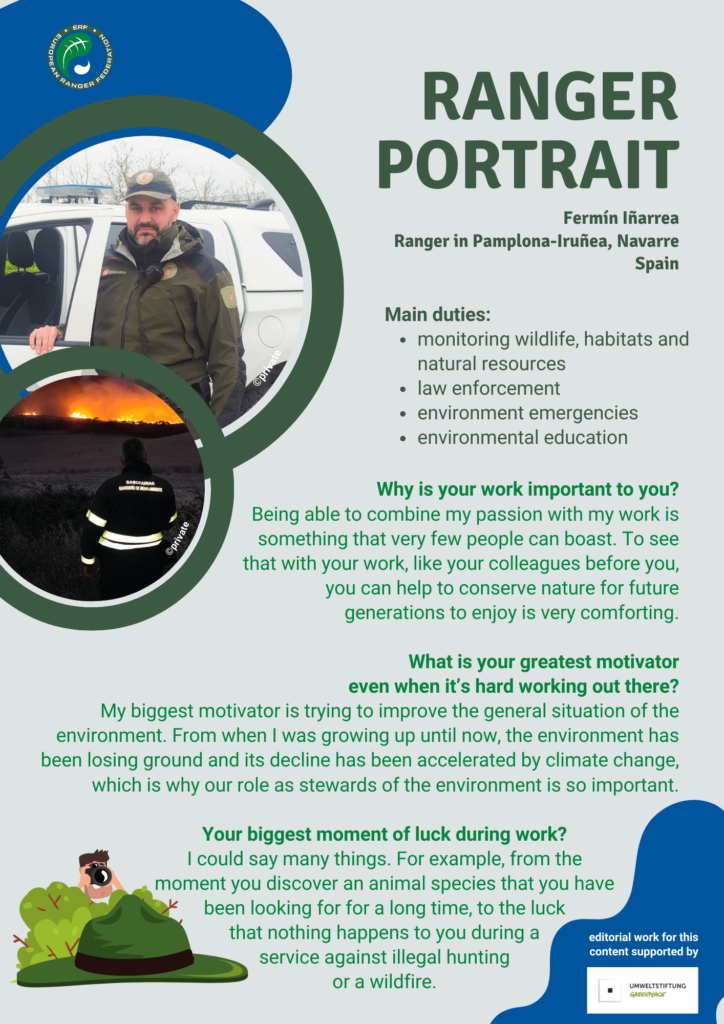
Fermín
Criminology as a discipline should be integrated into the ranger services, especially in the investigation teams for wildfires, wildlife-poaching, -poisoning etc. Environmental criminology brings a different perspective to our work, allowing us to analyse crimes and develop preventive measures, as well as improve investigations to establish guilt. Conventional crime investigation usually focuses on determining the cause in order to assess guilt. My work goes a step further by examining different crime scenarios in order to understand and prevent them. We need to evolve from traditional ranger services and adapt them to new needs, including new policing models.
Challenges include resistance to change, lack of interest from different administrations and the difficulty of integrating green criminology as a specialism into existing research groups. The growth of green victimology is also interesting. These disciplines are developing and it is important that public services get involved, collaborate with academic institutions and incorporate the knowledge gained into daily work. In Spain, two Ranger services are already including this discipline into their investigations.
Kris
The goal was to eventually cover as much of the area as possible with this method if the pilot was successful. The initial results were very positive – successful grazing of the reeds led to an increase in biodiversity as the reeds did not out-compete other plants, and the buffalo increased the diversity of the habitat through their wallowing. The buffalo were very popular with the public and generated educational opportunities to lift the ecosystem services the wetland provides and their contribution to its function. Once established – after initial fencing investments – the buffalo provide a more cost-effective solution as well, compared to mechanical cutting.
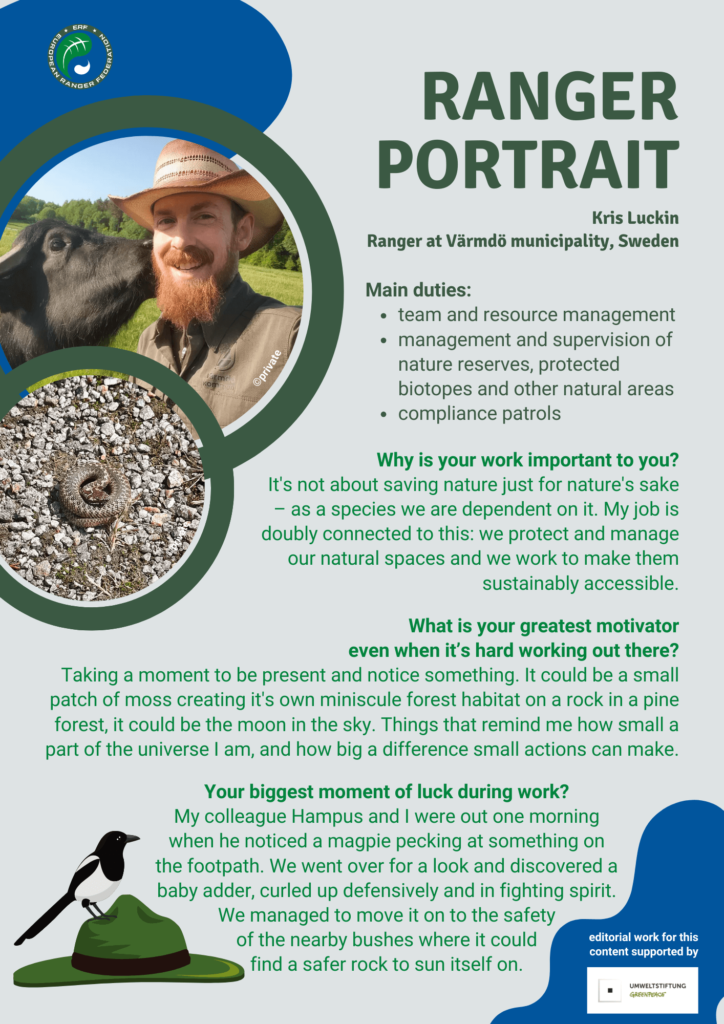
The main challenges were ensuring the solar panel kept the battery charged to power the fence, occasionally trimming vegetation along the fenceline, especially in the deepest areas where waders were not sufficient, and trimming the willows the buffalo kept pushing onto the fence in their efforts to reach the leaves! Following the success of the pilot, we have increased the coverage for grazing to approximately seven hectares and ten buffalo for 2024, with only about 1.5 hectares remaining that require mechanized or manual solutions.
For further information about the topics of Fermín’s master thesis check out these links:
Opportunity makes the thief Practical theory for crime prevention
Using situational crime prevention to address illegal wildlife trade: a toolkit
editorial work for this
content is supported by


